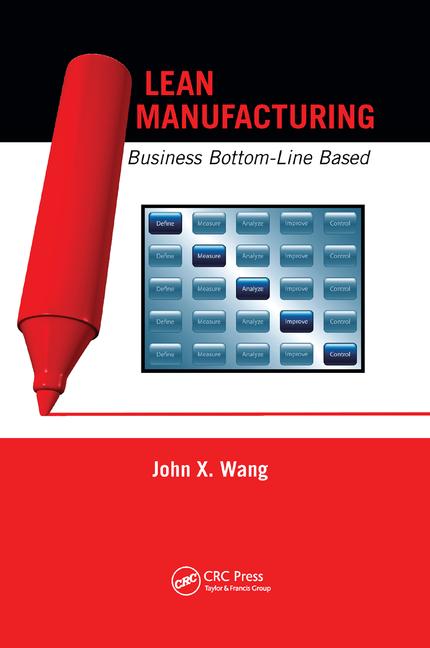While lean is a terrific concept, it is not a new one. Lean dates back to the early 1900s when Henry Ford, founder of the Ford Motor Co., proclaimed that any process that doesn’t add value creates waste. Almost everything about manufacturing has changed in the last 100 years, except the lean manufacturing concept, because it still makes sense. Lean helps produce what every customer treasures most—value.
Lean manufacturing produces value in reduced inventory, scrap, rework and lead-time from order to delivery. Lean also creates value because less floor space is required for product assembly and less time is needed for changeover. Finally, lean generates value by enabling employees to function at maximum efficiency through streamlining the manufacturing cycle and increasing production—without adding costs.
If the benefits of lean are so obvious, why aren’t more manufacturers doing it? Because starting and maintaining lean habits is not easy. It’s a never-ending process. It is self-defeating to make the up-front investment to get lean, and then fail to stay that way once the goal is achieved.
Even some who have made the switch don’t understand this concept, including a plant superintendent who once said, "I’m almost finished with my continuous improvement program." With this flawed logic, his plant undoubtedly never reached its full potential as a lean manufacturer.
The Benefits of Lean
So how does a manufacturer get lean? Let’s use an automobile assembly plant as an example. A good starting place for the lean process might be the engine assembly line. Inventory value is high, parts come from a variety of suppliers, and there is usually great potential to save floor space and labor.Engine line suppliers often provide components in large, bulky containers full of material. Each container represents several days’ worth of inventory, and there’s usually a backup container sitting on the floor behind it. All that inventory is rarely necessary. Four hours or less of inventory should be adequate.
The problem with keeping a lot of inventory—besides its cost—is that the amount of material along the assembly line often dictates the space between operations. Using the lean approach, the line is set up according to value being added by the operator. All parts and tools necessary to assemble the product are then fit into the operator’s value-adding space.
Lean lines feature individual, U-shaped workcells that allow for fluctuating manpower. When demand increases, operators are added to the cell. When demand decreases, operators are moved to more vital cells. This ensures that manpower is always deployed where it’s needed most.
Cells can also eliminate production steps, because operators are required to perform multiple functions. For example, operators can perform inspections as part of their normal job functions, rather than having one operator assemble the product and another inspect it down the line. Not only does this consolidate tasks, it also prevents rework problems that occur when inspections take place later in the assembly process.
Another benefit of lean lines is that they are safer than mass production lines. A lean line has very little inventory backup, allowing operators to clearly see each other. On mass production lines, they may be hidden behind a wall of inventory, increasing the chance of injury.
Lean cells are devoid of floor debris, such as metal bands, pallets and cardboard. Operators in a cell are close enough to communicate with one another, which not only promotes teamwork but also cleanliness and efficiency. On a mass production line, workers tend to be spread across a large area, making communication difficult and often resulting in a disorganized work space.
Because lean manufacturing frees up floor space, jobs that are currently outsourced can be internalized. That adds to the value-per-square-foot of the facility.
Lean Equipment
The initial investment in converting to lean can be less than $10,000. Obviously it’s not realistic to revise an en-tire plant for that amount, but there are small steps that can pay immediate dividends.The best lean assembly lines are supported by modular material handling systems. These systems are made up of S.M.A.R.T. structures—simple, mobile, adjustable, reusable and temporary. These structures, such as tool pedestals, tilted flow racks and mobile carts, help operators eliminate waste and increase production while performing a job.
Simple. Ideally, material handling structures alongside an assembly line should be constructed of fundamental components. The drawings required to make the structures should be elementary, and only basic tools and skills should be necessary to assemble the structures. If required, an operator should be able to create a structure to solve a problem independently within hours of identifying the situation’s requirements.
Mobile. Material handling structures should be easily relocated. If the workstation needs cleaning, the material handing structure should easily be rolled out of the way so the floor can be swept.
Adjustable. Customers, products and demand will all change. Operators will also change, perhaps from a lanky, right-handed person today to a shorter, left-handed one tomorrow. To be ergonomic, workstations should have a crank mechanism that easily raises or lowers the work surface to the desired height.
Reusability. On mass production lines, structures are welded and painted for onetime use. With reusable structures, a flow rack one day could become a table or a cart the next.
Temporary. Ideally, structures should be designed and built to last just for the current product’s life cycle or until the next improvement is implemented. This is not to say that the components themselves should not be extremely durable. Indeed, if used correctly, the components should last for decades. Some material handling structures have been exposed to the elements for 30 years and are still functioning the way they were designed.
An effective material handling system must meet all of the above criteria. In addition to being S.M.A.R.T., the flexibility of the system boosts employee morale because it generates ideas and encourages creative thinking. Employees can investigate more effective methods of using a material handling system in performing tasks. Having the power to implement positive change is a strong intangible—people enjoy working in that environment.
Facility size isn’t a factor in deciding to use lean material handling systems. They work as effectively for manufacturers that employ thousands as they do for plants with less than 100 employees.
There is no definitive blueprint for a lean plant. There are lean plants that do not use material handling systems, just as there are mass production plants that do use them. However, to achieve the greatest value in manufacturing, the most beneficial combination is a lean philosophy that relies on a material handling system to help eliminate waste and promote continuous improvement. In other words, a lean line is an effective method for beefing up the bottom line.



